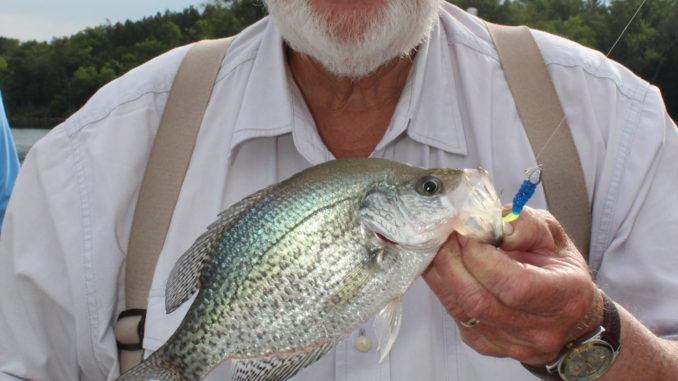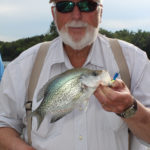
The crappie fishing at Lake Wateree is hot this month, and Buster Rush of Rush Guide Service said back-trolling jigs over brush piles is a great technique to put these fish in the boat.
“Finding brush piles is the key, but the depth you’re trolling, the speed you’re trolling, your line diameter and the color of your jigs all work together,” said Rush.
Concentrating on the Fishing Creek section of Wateree, Rush (http://www.rushguideservice.com/) took a quick trip last Thursday that produced about 60 crappie, plus two catfish and two white bass.
Richie Boykin of Bishopville was in Rush’s boat, and he enjoyed learning the back-trolling technique.
“I’ve never back-trolled before, but I really liked that way of fishing. You have to keep your eyes alert, and it certainly catches fish,” he said.
Rush and Boykin had 12 rods out — three in rod holders on the right side of the boat, just in front of the steering console, three directly across on the left side and three off each side of the front of the boat. When back-trolling, the front of the boat becomes the rear, so the jigs on those rods are the last to swim over the brush piles. In each cluster, one is 10-feet long, one is a 12-footer, and one is 14-feet long, helping limit the number of line tangles. Spinning reels with 6-pound test line complete the rods.
Rush uses several different colors of jigs, and as the day goes on, he weeds out the colors that aren’t producing, exchanging them with colors that are working. Two-inch WOW grubs by AWD Baits and 2½-inch Crappie Delight minnow jigs are his preferred baits, and the best colors change daily and even hourly.
Back-trolling is basically trolling very slowly in reverse. Rush said the best speed is right around 1 mph, and it is sometimes necessary to deploy at least one drift sock to keep the speed down.
Using a trolling motor to hold steady over a brush pile is another technique Rush uses. With a decent depth finder, anglers can use their trolling motor to move from one brush pile to the next. He said this often increases numbers of fish caught, but usually results in smaller fish than back-trolling.




Be the first to comment